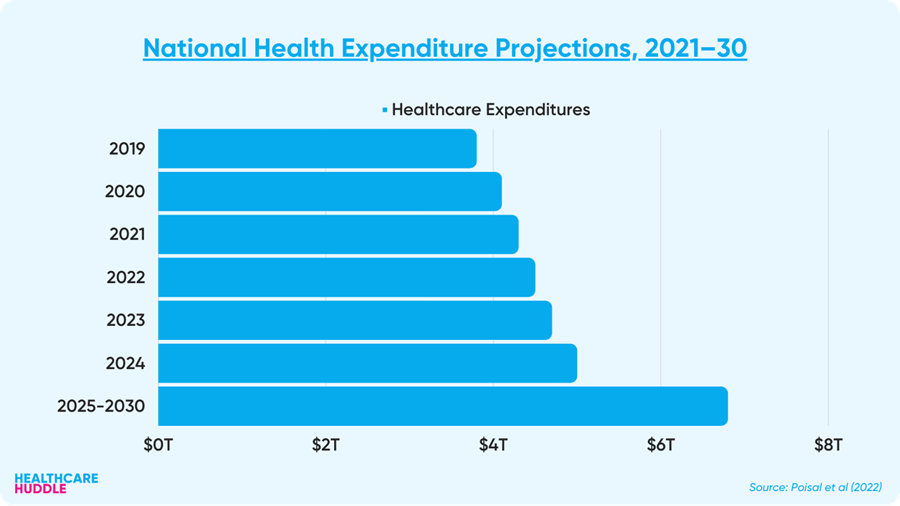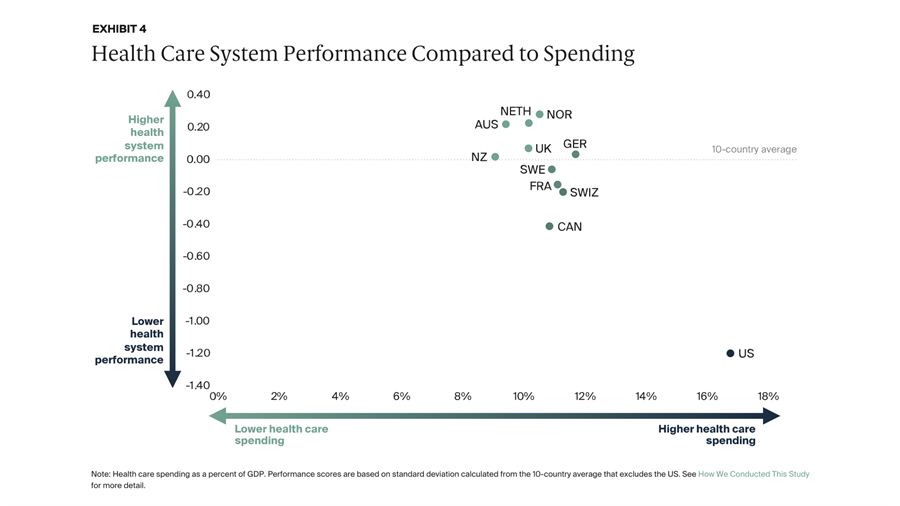03 April 2022 | Healthcare
U.S. Healthcare Spending 2021
By workweek
National healthcare expenditures (NHE) are expected to have grown 4.2% in 2021 compared to 9.7% in 2020, a major slowdown in healthcare spending.
Decreased federal funding for programs like the Provider Relief Fund and decreased public health activity likely slowed healthcare spending in 2021. However, a rebound in patient visits as the pandemic settled likely increased private and public insurance spending.
Now, what does NHE growth look like for the rest of the decade?
Magic 8 Ball

- 2022, 4.6% NHE growth
- Labor and supply shortages will hike up healthcare spending. Providers will charge more to match expenses for labor and supplies, and these expenses will trickle down to patients as insurers increase premiums. Additionally, increased demand for care services will drive spending.
- 2023-2024, ~5% NHE growth
- Healthcare activity will (hopefully) return to pre-pandemic levels, meaning patients are seeing their providers more frequently and going to preventative screenings.
- 2025-2030, 5.3% NHE growth
- Medicaid disproportionate share hospital (DSH) payment caps expire in 2027, meaning Medicaid spending will increase to reimburse qualifying hospitals for uncompensated care. FYI: DSH payments are required payments to hospitals to offset uncompensated care and improve access for Medicaid and uninsured patients.
- Medicare spending will slow down slightly, as the youngest (and last) of the baby Boomers complete their enrollment in Medicare.
Overall, per capita healthcare expenses are expected to jump from $13K per person now to around $20K per person by 2030. I can’t even fathom that number right now.
A Gentle Reminder
Healthcare spending in the U.S. is astronomical compared to peer nations, and is by no means “normal.” While the U.S. spends the most on healthcare, it performs the worse.

The U.S. ranks number one in healthcare expenditures compared to peer nations but ranks dead last in the following metrics:
- Access to care ➡️ ~9% of Americans don’t have health insurance, while in peer nations, citizens are guaranteed health insurance.
- Administrative Efficiency ➡️ The more fragmented and complex the system, the more inefficient it is.
- Equity ➡️ Care is not equitable in the U.S., which perpetuates perverse racial/ethnic disparities in health outcomes (e.g. maternal mortality)
- Outcomes ➡️ Even though the U.S. spends the most on healthcare, Americans don’t get the bang for their buck. Maternal mortality rates are 17.4 per 100K pregnancies in the U.S., compared to 7 per 100K pregnancies in the U.K.
The U.S.’s poor performance metrics are largely due to a fragmented, antiquated and change-resistant healthcare system. I’m cynical that anything will improve unless there’s transformational change. Perhaps this change will come from the next generation of physicians or healthcare leaders?